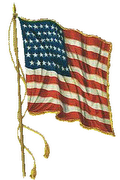Venice celebrates historic links with Islam
"If we can show that Venice had a relationship with the Middle East that was also positive, it's a good message"
Venice, 27 July (AKI) - For a thousand years Venice had a unique trading relationship with the great Muslim dynasties who shared their magnificent art and culture in a way that still defines the city today.
From the sumptuous silks, ceramics, carpets and gemstones sold by oriental traders to the Moorish architecture reflected in its elegant palaces and famous Basilica San Marco, the city has incorporated Islamic influences like few other cities in Italy.
Now Venice is celebrating its centuries-old relationship with the Islamic world in a vast exhibition which opens on 28 July.
"We wanted to tell the story of the close relationship Venice had with Islam," said Stefano Carboni, one of the curators, told Adnkronos.
"We had enough works of art to show that this was more than a commercial and diplomatic relationship, it was also cultural. It was a story we could tell visually."
The exhibition which has already been staged in Paris and New York displays more than 200 exhibits and has found an ideal venue in the historic Doge's Palace, once the centre of power in the Venetian Republic.
Among the exhibits are paintings, glassware, ceramics, metalwork, textiles, books and prints – some from prestigious Venetian collections and prominent museums in Europe and America.
The show is the result of a collaboration between the Institut du Monde Arabe in Paris, the Metropolitan Museum of Art in New York and the Musei Civici Veneziani. But Carboni said the curators had sourced items from 65 different institutions - 70 per cent of which were in Venice.
"This really required a really big effort, it was very complicated," he said. "It was a huge diplomatic and logistical exercise."
The exhibition charts the passionate and often complex relationship between Venice and the Muslim world, from the the Byzantine period in the 9th century through to the Ottoman Empire which dominated the near east during the sixteenth and seventeenth centuries.
The only European power to have a permanent envoy in the near east, Venice flourished as a maritime empire largely because of its ability to maintain relations with the other side of the Mediterranean.
"Venice was pushed by the Vatican to join the crusades, but always had a pragmatic approach," Carboni said. "The doges were always trying to mediate between the church and its Islamic neighbors."
Capable of understanding and appreciating its achievements in the world of science and philosophy, the city also showed itself capable of establishing relations with the great Muslim dynasties of the Ayyubids, the Mamelukes and the Ottomans.
The exhibition features masterpieces of Venetian painting from the fourteenth to the eighteenth century – works by artists as Bellini, Carpaccio, Veronese and Tiepolo – as well as drawings, miniatures and extremely rare works of cartography.
One of the most famous is a portrait of Sultan Maometto II (shown in the catalogue cover - see photo) painted in 1480 by Gentile Bellini who travelled to the Ottoman court in Constantinople.
"This is the only painting that we have from that period," Carboni said. "There was no tradition of portraits in the east. This gave birth to a fashion of portraiture which lasted for a couple of generations."
Illustrating how interaction between the two cultures affected the development of artistic languages within them, the material illustrates a continuous exchange of knowledge and technical know-how between artists, craftsmen, merchants and entrepreneurs.
Carboni said the exhibition was particularly timely since there is so much misunderstanding in the world between east and west.
"If we can show that Venice had a relationship with the Middle East that was also positive, it's a good message."
"It is a small step but I hope it will leave some mark," he added.
More than 420,000 people saw the exhibition in Paris and New York and thousands are expected to see it in Venice before it closes in November.
Pertinent Links:
1) Venice celebrates historic links with Islam
Sunday, July 29, 2007
Subscribe to:
Post Comments (Atom)




No comments:
Post a Comment